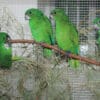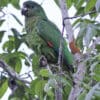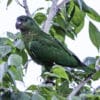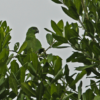Black-billed Amazon
Also known as:
Black-billed Parrot, All-green Amazon, Active Amazon
Also known as:
Black-billed Parrot, All-green Amazon, Active Amazon
DID YOU KNOW?
The courtship display of the Black-billed Amazon is unlike that of others of its kind – the male charges at the female and sways from side to side with a stiff-legged awkward motion, sometimes jumping over the female.

Amazona

agilis
Size:
25 cm (9.75 in)
Weight:
Not recorded.
Subspecies including nominate:
one
Colour Adult:
Male-plumage green with yellow/green on underparts; neck feathers softly dusted with black; red primary coverts; green tail with red at base. Beak grey, paler at base. Eye ring dark grey, eye dark brown. Female-as in male but with some primary coverts green instead of red.
Colour Juvenile:
As in adults but all primary coverts green.
Call:
Bugling while in flight. While perched growls and rumbles. Other notes sharp and screechy. Call notes higher pitched than calls of Yellow-billed Amazon.
More Information:
Content Sources:
CITES
Avibase
BirdLife International
Cornell Lab of Ornithology/Birds of the World
A Guide to Parrots of the World, Juniper and Parr, 1998
Parrots of the World, Forshaw, 2006. 2010 edition
Parrots: Their Care and Breeding, Low, 1986.
Lexicon of Parrots, Thomas Arndt.
Parrots: Status Survey and Conservation Plan 2000-2004, Snyder, McGowan, Gilardi and Grajal, 2000.
Captive Status:
Very rare
Longevity:
—
Housing:
4 x 1.5 x 2 m (13 x 5 x 6.5 ft) enclosure with metal construction.
Diet:
Seed mix such as: millet, canary, wheat, oats, limited safflower and sunflower, canary grass seed; limited pine nuts; fruits such as: apple, pear, banana, cactus fruits, kiwi; vegetables such as: carrot, celery, green beans and peas in the pod; berries such as: rowan (mountain ash), elder, rosehips; mineral supplements particularly A and C; green leaves such as: kale, Swiss chard, lettuce, dandelion, chickweed; complete kibble.
Enrichment:
Provide bird-safe branches (fir, pine, etc), wood and vegetable tanned leather chew toys, ladders, swings, foraging toys.
Nest Box Size:
Vertical box 10″ x 10″ x 24″ (25.4 cm x 25.4 cm x 61 cm).
Clutch Size:
2-3
Fledging Age:
8 weeks
Hatch Weight:
—
Peak Weight:
—
Weaning Weight:
—
World Population:
6000-15,000 mature individuals, decreasing.
IUCN Red List Status:
Endangered
CITES Listing:
Appendix II
Threat Summary:
A BirdLIfe ‘restricted-range’ species. Affected by increased cultivation for agriculture and logging. Mining has possibly resulted in much-reduced habitat. This species is also trapped as a food source locally, and there is also predation by yellow boas. Trapping for the wild bird trade appears to not have had much effect.
Range:
Found in Jamaica, West Indies.
Habitat:
Found between 300-1200 m (984-3936 ft) in wet limestone forest; also found in agricultural plots in forest and cultivated areas at forest edge.
Wild Diet:
Feeds on seeds, fruits, berries, leaf buds and blossoms; also ripe plantain, Musa, Cecropia, Ficus, Nectandra, Bryophyllum, Blighia sapida and Melia azedarach.
Ecology and Behaviour:
Found in flocks of 6-40 individuals or more. Roosts communally, rising at sunrise with much noise and high-flying. Feeds in middle to upper storeys of canopy. Resident, with local wandering according to food availability.
Clutch and Egg Size:
2-3 eggs
Breeding Season:
Courtship late January-February; nesting March-May in hollow limbs or tree cavities at least 18 m up; sometimes old woodpecker nests and bases of bromeliads.
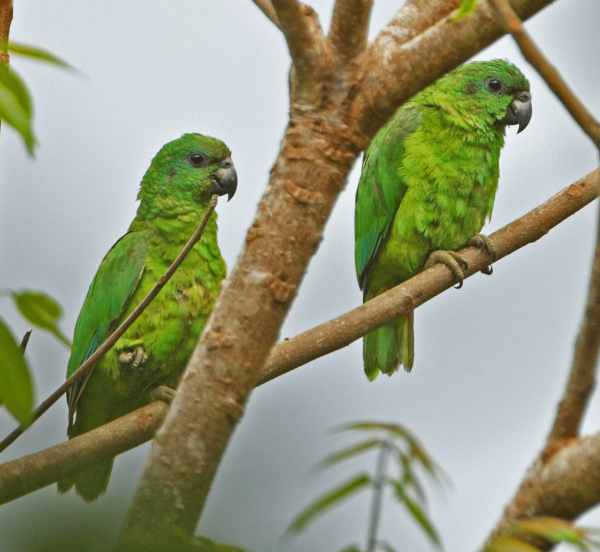
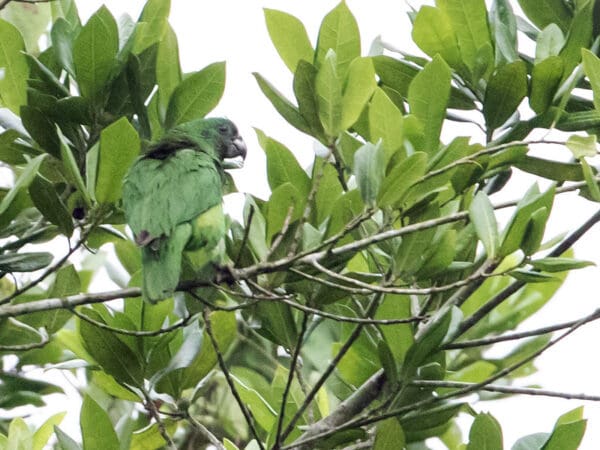
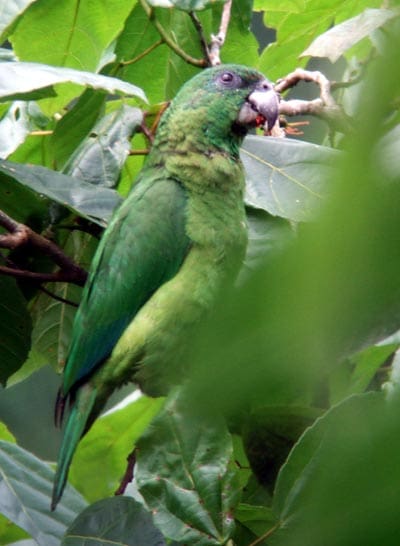
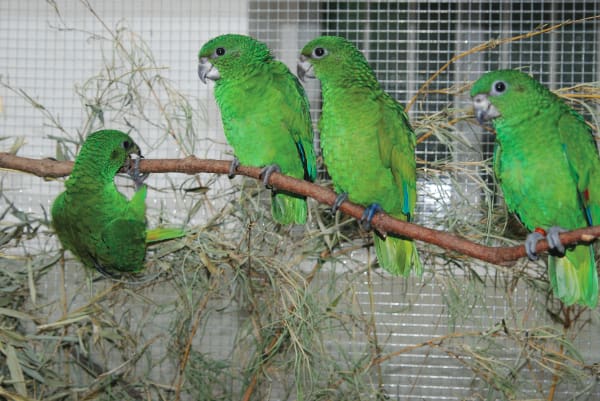
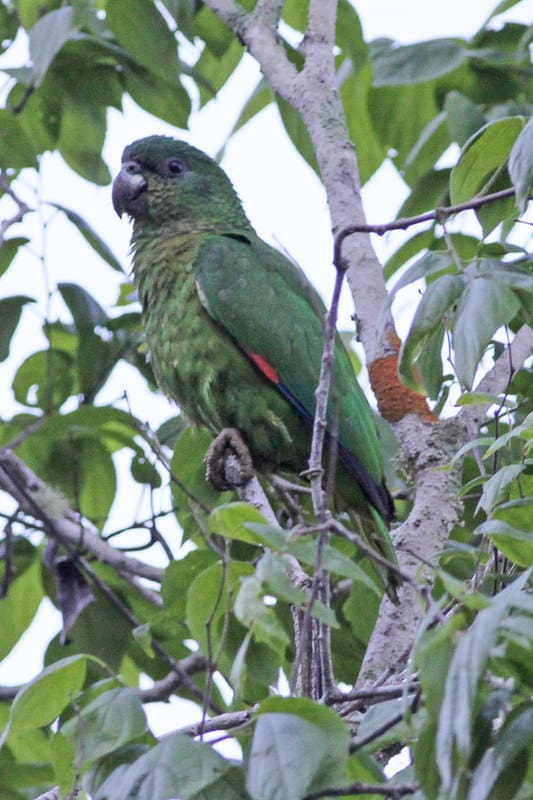
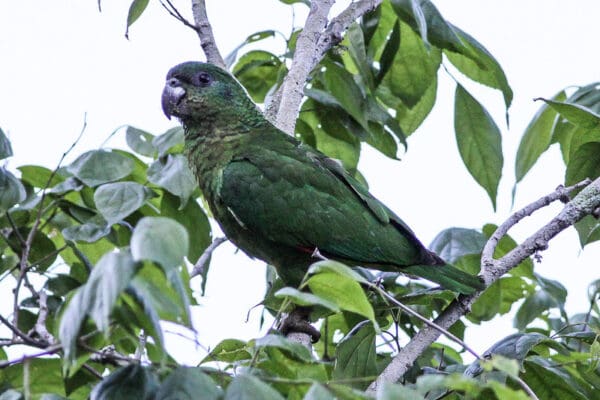

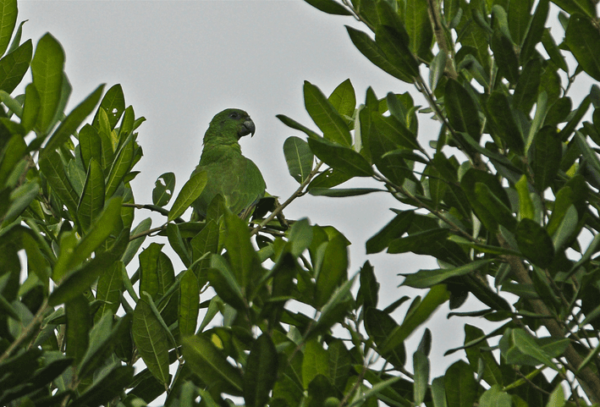
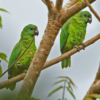
![© Brennan Mulrooney (originally posted to Flickr as Black-billed Parrot) [CC BY 2.0] via Wikimedia Commons A wild Black-billed Amazon perches in a leafy tree](https://parrots.org/wp-content/uploads/2023/01/wpt_Black-billed-Amazon_1412-14-100x100.jpg)
![© Nick Athanas [CC BY-SA 2.0] via Flickr A wild Black-billed Amazon perches in a leafy tree](https://parrots.org/wp-content/uploads/2023/01/wpt_Black-billed-Amazon_1412-8-100x100.jpg)
